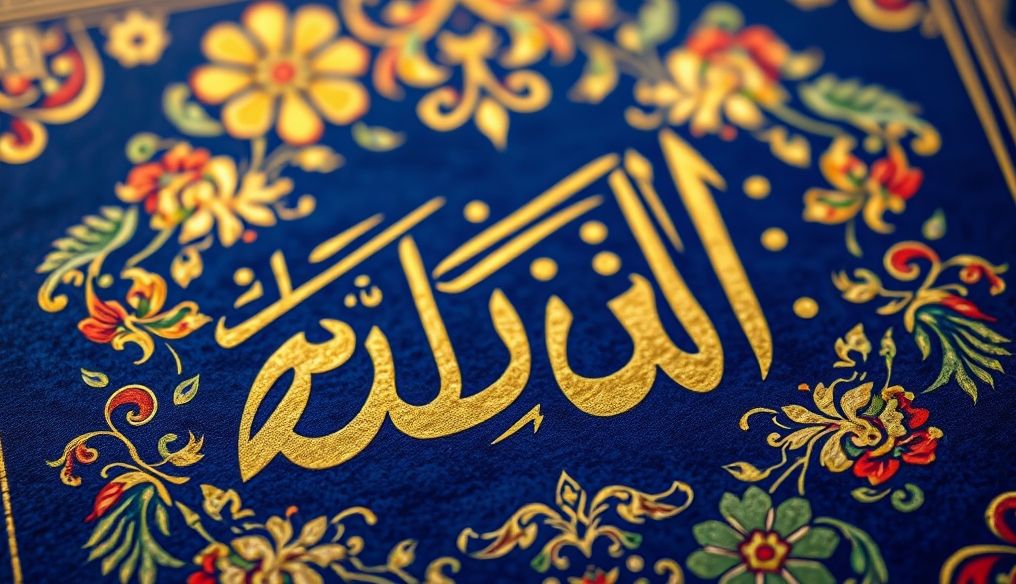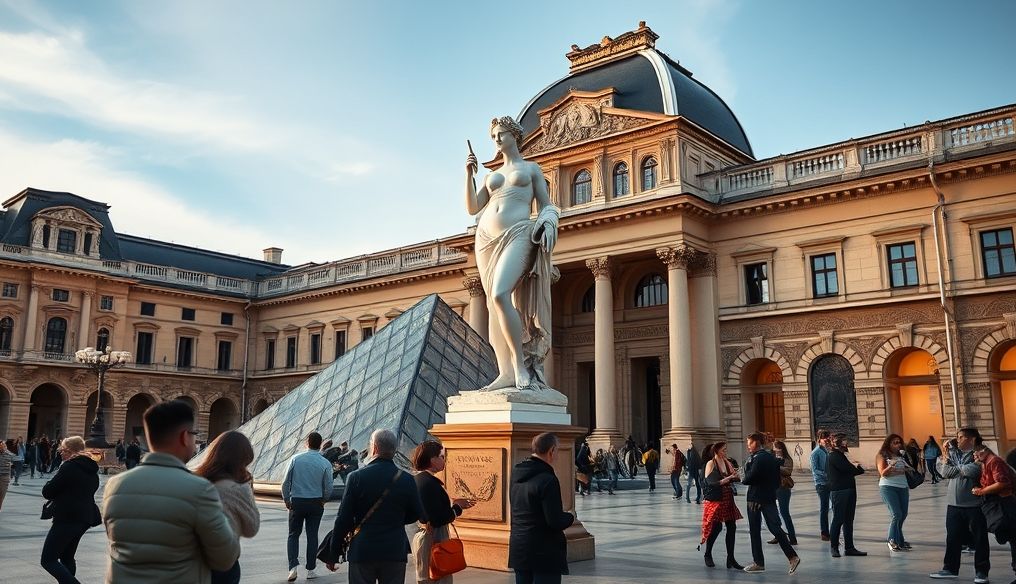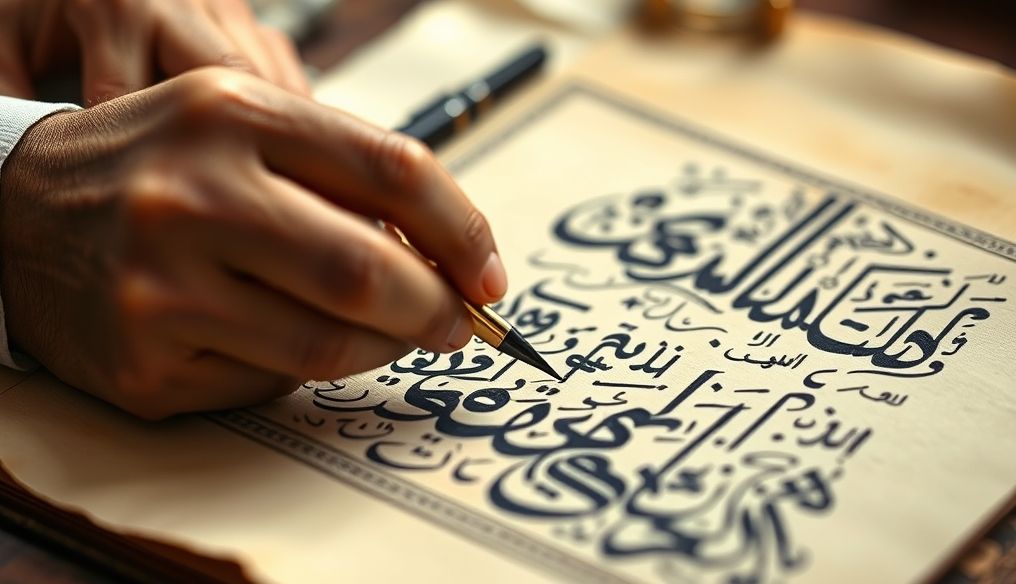Introduction: Beauty Beyond Letters
Arabic calligraphy, with its captivating beauty and diverse styles, is often seen as merely a form of beautiful writing. But does this perception reflect the complete truth of this ancient art? In this article, we will explore the different dimensions of Arabic calligraphy, showing that it goes far beyond simply beautifying texts, to become a deep artistic, cultural, and religious expression.
Chapter 1: Arabic Calligraphy - A Rich History and Deep Roots
The history of Arabic calligraphy dates back centuries, having evolved from the ancient Nabataean script. With the spread of Islam, Arabic calligraphy gained great importance, as it became the primary means of writing and disseminating the Holy Quran. This close association with the Islamic religion contributed to its development and spread throughout the Islamic world.
- Kufic Script: The oldest type of Arabic script, characterized by its sharp angles and straight lines.
- Naskh Script: A more flexible and easier-to-read script, widely used in copying books and manuscripts.
- Thuluth Script: Considered one of the most beautiful and complex Arabic scripts, used in writing titles and decorations.
- Ruq'ah Script: A fast and easy-to-write script, used in everyday writing.
- Diwani Script: A script characterized by its curves and circles, used in writing official documents and correspondence.
Chapter 2: Arabic Calligraphy - An Art with Rules and Principles
Arabic calligraphy is not just random writing, but an art with strict rules and principles that the calligrapher must follow. These rules include:
- Proportions and Ratios: There must be proportion and ratio between the parts of a single letter and between different letters.
- Composition: The overall composition of the word or sentence must be harmonious and beautiful.
- Balance: There must be a balance between the spaces and lines in the artwork.
Mastering these rules requires years of study, training, and practice.
Chapter 3: Arabic Calligraphy - An Expression of Identity and Culture
Arabic calligraphy is not just a means of writing, but also an expression of Arab and Islamic identity and culture. Each region has its own style of calligraphy, reflecting its history and traditions. For example, Moroccan calligraphy is characterized by its intricate decorations, while Persian calligraphy is characterized by its fluidity and elegance.
Arabic calligraphy is used to decorate mosques, palaces, and homes, and in the design of currencies, stamps, and posters, making it an integral part of the cultural heritage of the Islamic world.
Chapter 4: Arabic Calligraphy - A Tool for Artistic Expression and Creativity
Arabic calligraphy is a powerful tool for artistic expression and creativity. The calligrapher can use the script to express their feelings and ideas, and to create unique works of art. Arabic calligraphy is used in a variety of artworks, such as paintings, sculptures, and drawings.
The creative calligrapher can combine Arabic calligraphy with other artistic elements, such as colors and decorations, to create more complex and beautiful artworks.
Chapter 5: Arabic Calligraphy - In the Modern Era
Despite the emergence of printing and modern technology, Arabic calligraphy still retains its place and importance. Arabic calligraphy is used in the design of logos, advertisements, and websites. There are also many contemporary artists who use Arabic calligraphy in their artwork.
Many institutions and organizations seek to preserve and promote the art of Arabic calligraphy, by organizing training courses, exhibitions, and competitions.
Chapter 6: Arabic Calligraphy - Benefits Beyond Beauty
In addition to its artistic and cultural value, Arabic calligraphy offers other benefits:
- Improving Focus and Attention: Learning Arabic calligraphy requires great focus and attention, which helps to improve these skills.
- Developing Patience and Perseverance: Mastering Arabic calligraphy requires patience and perseverance, which helps to develop these qualities.
- Enhancing Creativity and Imagination: Arabic calligraphy allows for self-expression and creativity, which enhances imagination.
- Learning About Heritage and Culture: Learning Arabic calligraphy contributes to learning about Arab and Islamic heritage and culture.
Chapter 7: Challenges Facing the Art of Arabic Calligraphy
Despite its importance, the art of Arabic calligraphy faces some challenges:
- Few Skilled Calligraphers: Mastering Arabic calligraphy requires years of study and training, making the number of skilled calligraphers small.
- Difficulty in Learning Arabic Calligraphy: Arabic calligraphy is considered one of the difficult arts that requires patience and perseverance.
- Competition from Modern Technology: Modern technology offers easy and fast alternatives to writing, reducing reliance on handwriting.
Chapter 8: The Future of Arabic Calligraphy - Promising Prospects
Despite the challenges, the future of Arabic calligraphy remains promising. There is a growing interest in the art of Arabic calligraphy by young people, and there are many initiatives aimed at preserving and promoting it. With the development of technology, Arabic calligraphy can be used in new and innovative applications, such as designing digital fonts and animations.
Educational and cultural institutions must play a greater role in teaching and promoting Arabic calligraphy, to ensure its continuity and transmission to future generations.
Arabic calligraphy is the artistic practice of handwriting and calligraphy based on the Arabic alphabet. It is known in Arabic as Khatt (خط), derived from the word 'line', 'design', or 'construction'.
— Wikipedia, Arabic Calligraphy
Conclusion: Arabic Calligraphy - More Than Just Writing
In conclusion, it can be said that Arabic calligraphy is not just beautiful writing, but an ancient art that carries a great history and culture. It is an expression of identity and creativity, and a tool for artistic expression and cultural communication. We must preserve and promote this art, to ensure its continuity and transmission to future generations.




